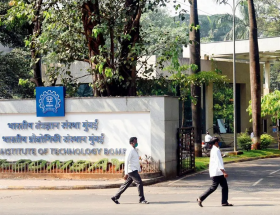Ganesh Pandit
The Andaman and Nicobar Islands project holds significance for India’s development and security. Currently, India lacks a dedicated port for trade along the east-west international shipping corridor, relying heavily on Sri Lanka’s Colombo port for 43% of transshipment cargo (Chowdhary, 2022). The strategic positioning of the transshipment port in Great Nicobar will present strong competition to China’s ports in Sri Lanka (Hambantota) and Singapore, offering an alternative transshipment hub for BIMSTEC countries and Indonesia. Furthermore, it will enhance security measures in the Indian Ocean, countering China’s ‘string of pearls’ policy directed at India.
India boasts a unique climate that translates into ten distinct biogeographical zones. Among these, the Andaman and Nicobar Islands stand out for their extraordinary location in the Doldrum Belt[1], characterized by remarkable biodiversity. Approximately 80% of the islands are covered by national parks, reserves, and forests. According to the Zoological Survey of India, the islands host a total of 9601 recorded animal species, with 1123 being endemic (Nandi, 2021).
The Great Nicobar Islands, situated in the northeastern part known as the coral triangle, are particularly rich in both terrestrial and marine biodiversity. Recognizing the ecological wealth, the Government of India has increased investments and initiated development projects in connectivity, energy, and tourism in these regions. However, it’s worth noting that a recently approved development project for Nicobar Island has generated controversy.
The Government of India (GOI) has given its approval for a significant project covering 16,610 hectares of land, including 130.75 sq km of forest area. Facilitated under the Andaman and Nicobar Islands Integrated Development Corporation Ltd. (ANIIDCO), the projected cost of the initiative is estimated at $75,000. This financial allocation encompasses the construction of a greenfield international airport, an international container terminal, a township, and a power plant. The strategic importance of this development is underscored by the fact that the east-west international shipping route traverses the southern region of Nicobar Island. This positioning provides India with a unique opportunity to integrate into the global supply chain, thereby playing a crucial role on the international stage.
The world’s busiest strait, the Strait of Malacca, lies just 200 km south of Nicobar, serving as a critical chokepoint for global trade. A staggering 25% of world trade and 80% of the global crude oil supply traverse this route. With the implementation of these development projects, India gains strategic control over a significant portion of China’s trade—commanding 80% of its oil and overseeing 70% of its overall trade, particularly with Europe, the Middle East, and Africa, which heavily relies on the Malacca Strait (Schuman 2022).
Experts anticipate that this initiative will empower India to formulate a secondary ‘metal chain’ strategy for security and a sea denial strategy[2] in naval warfare. In the event of a conflict, India could potentially economically hamper China by obstructing the Malacca Strait. Moreover, India can establish a maritime exclusive zone with the aid of advanced weaponry, solidifying its position as a key player in the geopolitics of the Indian Ocean and challenging the dominance of other nations.
The statement, “Development and environment are two sides of the same coin,” encapsulates a critical aspect of the project’s dual impact. While the project holds strategic importance for India’s geopolitical standing and global economic integration, it also raises valid concerns about environmental and ecological degradation in Nicobar.
When assessed from an ecological and environmental perspective, the development project is anticipated to lead to the loss of approximately 8.5 lakh trees in pristine rainforests, a reduction of 12 to 20 hectares of mangrove cover, and the degradation of coral reefs. Moreover, the project will adversely affect the lives of around 1761 inhabitants, particularly those belonging to the indigenous Nicobarese and Shompen communities. Of particular concern is the precarious situation of the Shompen community, with only 229 individuals remaining, and the unfortunate extinction of the ‘Bo’ tribal community (Times of India, 2018). This juxtaposition highlights the intricate balance between development aspirations and environmental preservation, prompting the need for a thoughtful and sustainable approach to address both aspects simultaneously.
This project warrants thorough scrutiny due to its potential environmental consequences, encompassing issues like deforestation, habitat destruction, and disruption of the ecosystem. Emphasizing these environmental consequences, alongside recognizing the historical and cultural significance of the local communities, brings to light ethical concerns regarding the project’s social and environmental impacts.
The Government of India (GOI) should prioritize an inclusive development approach that respects the rights of tribal communities and ensures their active participation in decision-making processes. This involves acknowledging and safeguarding the unique historical and cultural heritage of the local inhabitants. Striking a balance between development goals and environmental preservation while upholding the principles of social justice is crucial for the sustainable and responsible implementation of such projects.
The Ministry of Environment, Forestry, and Climate Change’s official document highlights the substantial impact of the project on pristine green forests with high biodiversity and endemic species. According to the Ministry, the island is home to one of the best-preserved tropical forests globally, boasting around 650 species of flora and 350 species of fauna (The Wire, 2022). The implementation of the project has led to evident ecological and environmental degradation.
To address this degradation, the Government of India (GOI) proposes a ‘compensatory afforestation’ plan, intending to undertake afforestation activities on non-notified forest land in Haryana, later shifting to Madhya Pradesh. However, a pertinent concern arises about whether compensatory afforestation adequately addresses the impact on the actual forested land affected by the project. The estimated cost of the project is ₹ 970 crore (The Wire, 2022).
In response to environmental concerns, the government has established committees for ecology and environmental conservation, tribal and Shompen welfare, pollution control, and biodiversity. The commitment to spend significant amounts of money to care for the Nicobar environment is acknowledged.
This situation underscores the complex dilemma faced by societies today: the apparent trade-off between development and environmental preservation. Balancing both needs in a sustainable and responsible manner requires thoughtful planning, transparent decision-making, and a commitment to long-term environmental stewardship. It necessitates finding innovative solutions that allow for development without compromising the integrity of precious ecosystems.
In conclusion, the project under consideration holds significance for India’s development and security. While acknowledging the inherent trade-off between environmental preservation and development, the project presents opportunities for contributing to India’s economic growth and enhancing its influence in world trade. There is potential for developing the island as a sustainable tourism hub, fostering ecological conservation, contributing to the Indian GDP, and generating employment.
In weighing the options, considering the current security scenario and economic interests, moving forward with the development project seems warranted. It’s important to recognize that perspectives on this matter may vary among different groups, contingent on their priorities and values. The government’s intention to minimize environmental harm and allocate profits for environmental restoration reflects a commitment to responsible development. Ultimately, the decision involves carefully balancing the benefits of development with the imperative of environmental protection. The ongoing dialogue surrounding this project should be inclusive, considering diverse viewpoints and prioritizing sustainable practices to ensure a harmonious coexistence between development and environmental well-being.
~
Bibliography
Choudhury, A. (2022, November 12). India’s Opportunity in Post-Crisis Sri Lanka. The Diplomat. https://thediplomat.com/2022/11/indias-opportunity-in-post-crisis-sri-lanka/
Díaz, Sandra, Josef Settele, Eduardo S. Brondízio et al The pervasive human-driven decline of life on Earth points to the need for transformative change. Science 366 (6471). DOI: 10.1126/science.aax3100
Great Nicobar project: Great Nicobar megaproject gets the environmental nod. (2022, September 21). The Economic Times. Retrieved November 21, 2023, from https://economictimes.indiatimes.com/news/india/great-nicobar-mega-project-gets-environmental-nod/articleshow/94354141.cms
The Indian Ocean Region May Soon Play a Lead Role in World Affairs. (2019, January 16). The Wire. https://thewire.in/world/the-indian-ocean-region-may-soon-play-a-lead-role-in-world-affairs
Massive infrastructure project threatens Great Nicobar Island. (2022, November 14). Frontline. Retrieved November 21, 2023, from https://frontline.thehindu.com/environment/massive-infrastructure-project-proposed-by-central-government-threatens-great-nicobar-island/article65991977.ece
Nandi, J. (2021, May 31). Experts fear biodiversity loss in Andaman, Nicobar Islands. Hindustan Times. https://www.hindustantimes.com/india-news/experts-fear-biodiversity-loss-in-andaman-nicobar-islands-101622415141217-amp.html
Over 130 Sq Km Forest Land to Be Diverted for Great Nicobar Island Megaproject. (2022, November 10). The Wire. Retrieved November 23, 2023, from https://thewire.in/environment/great-nicobar-island-project-130-sq-km-forest-area
Schumann, S. (n.d.). Malacca Strait: China’s Strategic Chokepoint. FleetMon’s Vessel Tracking Help Desk. https://help.fleetmon.com/en/articles/4521790-malacca-strait-china-s-strategic-chokepoint
Sentinel Island: Why the Sentinelese choose solitude even 60000 years on | India News. (2018, November 26). Times of India. https://m.timesofindia.com/india/learning-with-the-times-why-the-sentinelese-choose-solitude-even-60000-years-on/amp_articleshow/66802219.cms
[1] Doldrum belt: the equatorial low-pressure belt, where the convergence of air happens. This belt location is north-south 5 degrees, no winds blow, and is also called the 4 o’clock rain region.
[2] Sea denial strategy means you use your naval force to prevent your enemy from having sea control, so cannot use it for the things he wants to do.
~~~
Ganesh Pandit is an L.L.B student at the University of Delhi with a distinction in Economics at Fergusson College. He was a Privileged Judge for The Queen’s Commonwealth Essay Competition 2023, recognized for nurturing young talents. He is also experienced in legal research, project coordination, and disability advocacy through roles at PATH Foundation, Eklavya India Foundation, and Savali Foundation.










